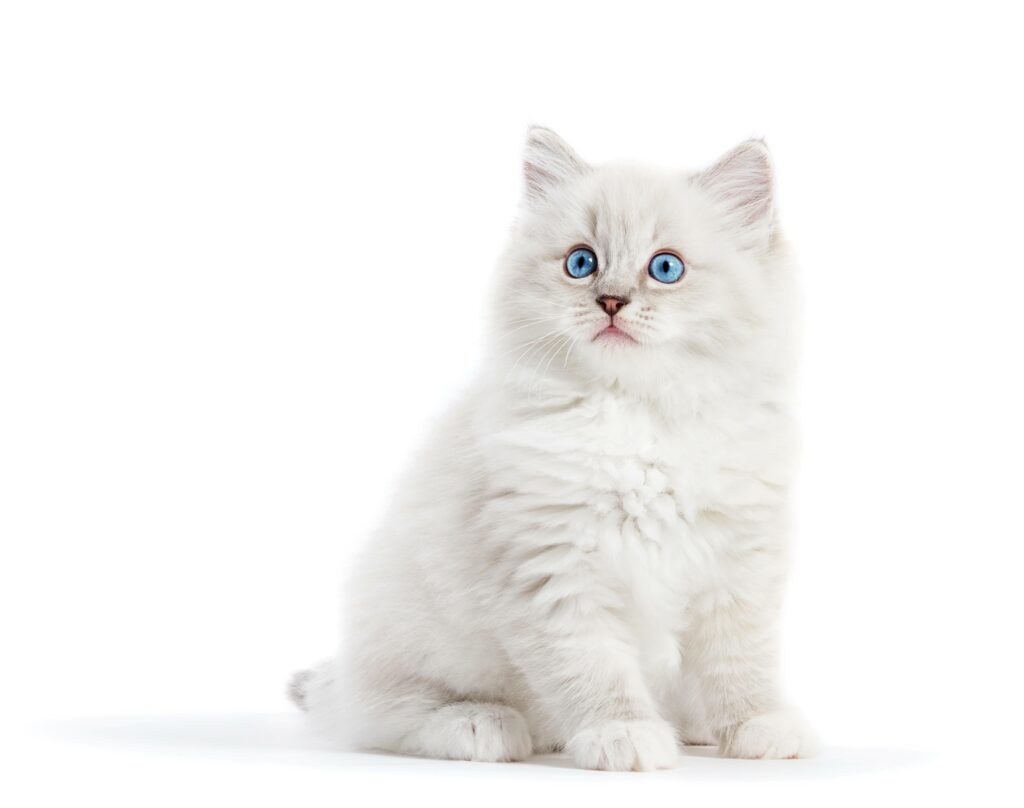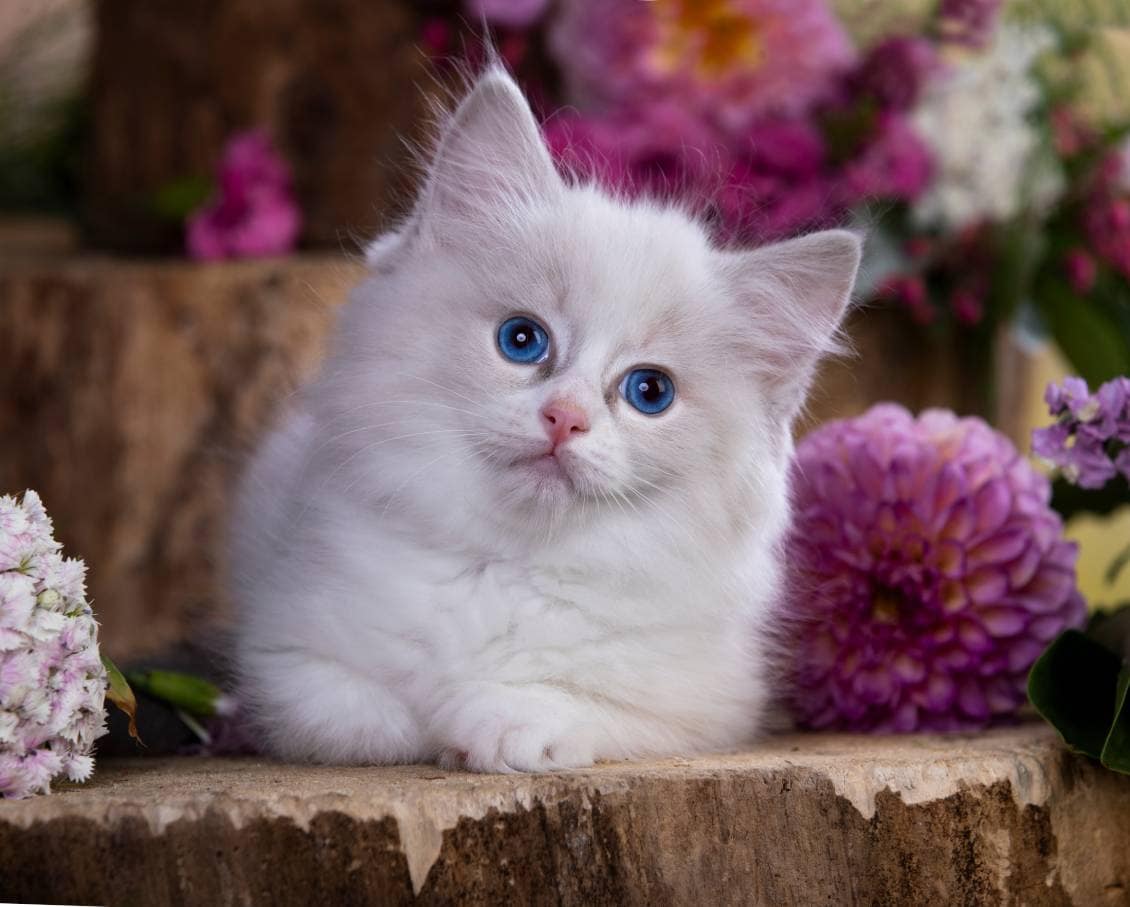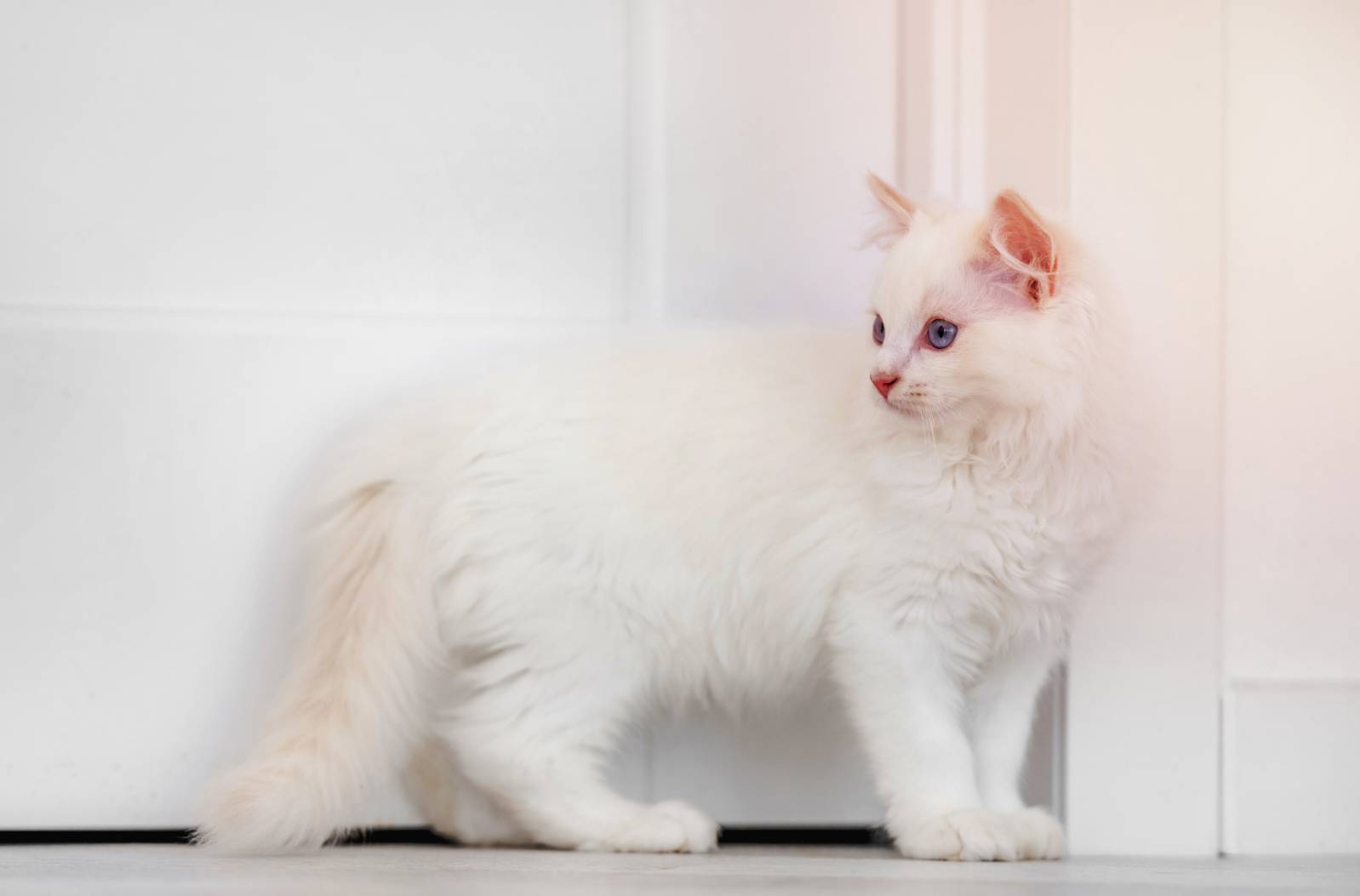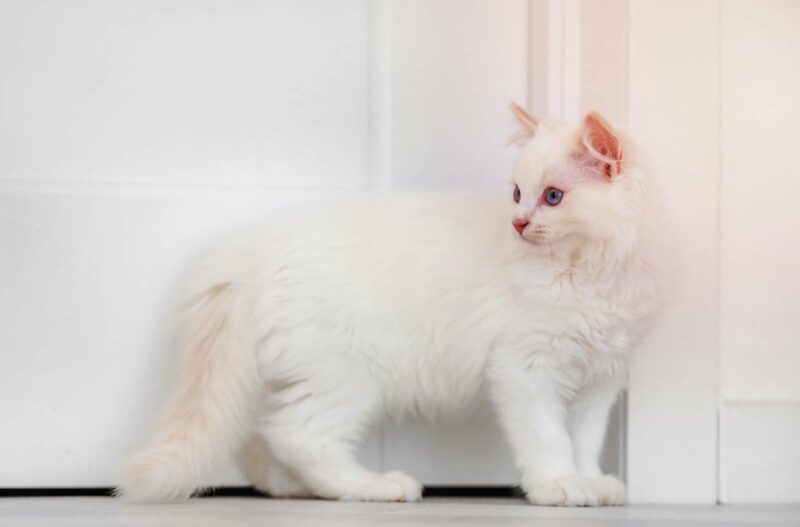Click to Skip Ahead
Ragdoll cats are easily one of the most popular cat breeds in the world. These long-haired cats are social, loving, and great with people. This breed does well with children and even other pets like dogs. Ragdolls are beautiful kitties that are front and center of a bit of controversy. What controversy can cats be a part of, you may ask? Oddly enough, it all has to do with coloring.
Breed Overview
Height:
9 – 11 inches
Weight:
10 – 20 pounds
Lifespan:
15- 20 years
Colors:
Varies widely
Suitable for:
Anyone who wants a cuddly cat!
Temperament:
Docile, cuddly, loyal
Since Ragdolls were formally recognized, certain traits and appearances have been the standard. When it comes to colors, the Ragdoll standard is a pointed cat. This means the body is meant to be lighter in color than the face. The only recognized Ragdoll colors are seal, chocolate, blue, flame, lilac, and cream. Unfortunately, white isn’t on the list. But does that mean white Ragdolls don’t exist? The answer is no one really knows. There are white cats that resemble and act like Ragdolls that some consider pure breeds, but there are societies and breeders who say no.
Characteristics
The Earliest Records of White Ragdoll Cats in History
It’s difficult to pinpoint when the first white Ragdoll appeared in the breed’s history. What we do know is that the history surrounding Ragdolls is somewhat strange. There are at least two stories associated with this breed, with no one truly knowing which is true. What we do know for sure is that we can thank a woman named Ann Baker for the precious breed we know today.
In the early 1960s, Ann was a breeder of Persian cats who lived in Riverdale, California. One of Ann’s cats was named Josephine. Some stories claim Josephine, a white Angora cat, was a rescue in Ann’s care while others claim she and her offspring were borrowed as part of the breeding program. Either way, all Ragdolls can trace their heritage back to Josephine. It is believed that Josephine was bred with a Birman to produce the first Ragdoll kitties. Over the years, Ann worked to create the Ragdoll breed and enhance the traits she wanted to include.
How White Ragdoll Cats Gained Popularity
Ragdolls became extremely popular in society fairly quickly. The unique beauty and habit of falling limp like a ragdoll when being held made people want them as part of their families. White Ragdolls, however, were always viewed as a myth or fake Ragdolls by certain breeders and societies. Recently, the International Cat Association began accepting white Ragdolls as pure breeds. This has helped these rare kitties gain popularity ever since.

Formal Recognition of White Ragdoll Cats
The Ragdoll breed was formally recognized by The Cat Fanciers Association in 1966 when Ann Baker officially registered her breed. When it comes to white Ragdolls, however, the CFA does not recognize them as purebred Ragdolls. However, in recent years, the International Cat Association has begun accepting white as a part of the Ragdoll breed standard.
Top 3 Unique Facts About White Ragdoll Cats
1. An Accident Could be the Reason Ragdolls Got Their Name
There are several stories surrounding the origins of Ragdolls. One such story has to do with Josephine, the mother of the breed, and an accident. Is claimed that Ann Baker’s cat Josephine was injured in an accident where she was hit by a car. After the accident, the mother of the breed was unable to feel pain and would flop in her owner’s arms like a ragdoll when she was picked up.
2. All Ragdolls Are Born Without Color in Their Coat
With such a huge controversy over what colors are accepted as breed standards for the Ragdoll, it’s odd to realize kittens of this breed are born without any coloration. The pigment comes in as the cats’ age. Most Ragdolls don’t reach their true coloration until they are around 2 years old.
3. Cream Colored Ragdolls Are Ultra Rare
With white Ragdolls not being accepted by so many, that leaves cream Ragdolls as the rarest ones out there. Roughly 3% of Ragdoll owners are lucky enough to have one of these uniquely colored kitties in their home. A cream Ragdoll has a white body with ivory points around the face. Often, people confuse these cats with pure white Ragdolls.
Does a White Ragdoll Cat Make a Good Pet?
Whether they are white, cream, or any accepted color, Ragdolls make excellent pets. These cats are very even-tempered, loving, and family oriented. Ragdolls enjoy spending time with their families and can even be taught tricks due to their high intelligence. Whether you have children or other pets, a Ragdoll can be the perfect kitty addition to any family.

Conclusion
With the controversy surrounding white Ragdoll cats, it’s difficult to say whether the coloration is real or not. Certain breeders and cat associations have opened their arms to the possibility of a solid-colored Ragdoll while others haven’t. Either way, you cannot deny the beauty and temperament of these amazing cats. If you have the chance to welcome one into your home, you definitely should.
Featured Image Credit: cataliniturca Shutterstock









